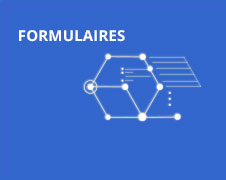Julie Talbot
Impacts des activités humaines sur les écosystèmes naturels, changements climatiques
- Directrice de département
-
Faculté des arts et des sciences - Département de géographie
Complexe des sciences, local B-2021
- Professeure agrégée
-
Faculté des arts et des sciences - Département de géographie
Complexe des sciences, local B-6417
Médias
Portrait
Expertise de recherche
Mon laboratoire se spécialise dans l’étude de la stabilité à long terme des écosystèmes. Plus spécifiquement, nous cherchons à comprendre les facteurs de stabilité et d’instabilité des fonctions et services écosystémiques des milieux humides et aquatiques dans un contexte de changements environnementaux. Nous nous intéressons à la fois aux changements à long terme (siècles –millénaires) et aux changements à moyen terme (années – décennies). Pour ce faire, nous utilisons diverses techniques, incluant la micropaléontologie, les mesures biogéochimiques, les inventaires végétaux et la modélisation.
Un autre axe de nos recherches couvre les impacts environnementaux des activités de recherche scientifique. Nous nous intéressons ainsi aux concepts d'empreinte carbone et d'empreinte azote, appliqués aux institutions.
Biographie
Professeure au département de géographie de l'UdeM depuis 2012. Auparavant, elle réalise un post-doctorat à l'Université du New Hampshire et un doctorat à l'Université McGill. Ses recherches se concentrent sur les impacts des activités humaines sur le fonctionnement des écosystèmes naturels, en particulier des milieux humides. Julie Talbot a aussi un intérêt envers la quantification des impacts environnementaux des activités des universités et de la recherche, en particulier la mobilité académique.
Prix et distinctions
- Prix d’excellence en enseignement - Catégorie professeurs - 2018
Affiliations et responsabilités
Affiliations de recherche
Enseignement et encadrement
Enseignement
Cours siglés (session en cours uniquement)
- AME-6420 – Lectures dirigées 1
- GEO-1130 – Introduction au système terrestre
- GEO-2112 – Biogéographie
- GEO-3320 – Changements environnementaux
- GEO-3320 – Changements environnementaux
Programmes
Encadrement
Thèses et mémoires dirigés (dépôt institutionnel Papyrus)
Impacts des véhicules tout-terrain sur les tourbières boréales
Cycle : Maîtrise
Diplôme obtenu : M. Sc.
La géographie et la biogéochimie des mares de tourbières tempérées : patrons et processus à l’interface eau-tourbe
Cycle : Doctorat
Diplôme obtenu : Ph. D.
Évaluation à l'aide d'indicateurs biogéochimiques du succès de création des mares de tourbières situées au Québec et au Nouveau-Brunswick dans un contexte de restauration
Cycle : Maîtrise
Diplôme obtenu : M. Sc.
Les marges des tourbières ombrotrophes dans un contexte d'anthropisation du paysage
Cycle : Maîtrise
Diplôme obtenu : M. Sc.
Contamination atmosphérique en éléments traces au sein de tourbières ombrotrophes situées à proximité d’une fonderie de cuivre
Cycle : Maîtrise
Diplôme obtenu : M. Sc.
Linking dissolved organic matter quality and quantity to CO2 and CH4 concentrations in ombrotrophic bog pools
Cycle : Maîtrise
Diplôme obtenu : M. Sc.
Modélisation spatiale des stocks en carbone, azote et phosphore des tourbières laurentiennes
Cycle : Maîtrise
Diplôme obtenu : M. Sc.
Cycle des nutriments dans les mares d’une tourbière ombrotrophe du sud du Québec
Cycle : Maîtrise
Diplôme obtenu : M. Sc.
Insects tell a story : a web interwoven with entomology and Naskapi knowledge in Kawawachikamach
Cycle : Maîtrise
Diplôme obtenu : M. Sc.
Reconstitution des taux récents d’accumulation de carbone et des conditions paléoécologiques de la tourbière boréale Degerö Stormyr, Suède
Cycle : Maîtrise
Diplôme obtenu : M. Sc.
Changements climatiques et écologiques dans le nord de l’Alaska au cours de la glaciation du Wisconsinien : le Yedoma de la rivière Itkillik
Cycle : Maîtrise
Diplôme obtenu : M. Sc.
Paléoécologie d’une tourbière à pergélisol en dégradation du sud des Territoires du Nord-Ouest : implications pour le cycle du carbone
Cycle : Maîtrise
Diplôme obtenu : M. Sc.
Les lithalses : étude d’un pergélisol marginal en dégradation dans la vallée A’ą̈y Chù, au Sud-Ouest du Yukon
Cycle : Maîtrise
Diplôme obtenu : M. Sc.
Projets
Projets de recherche
Archéologie et environnement du bassin versant du fleuve Saint-Laurent
(Dés)information et plateformes numériques au Québec. Comprendre les usages informationnels du jeune public au secondaire et collégial.
The carbon cycling of eastern Quebec boreal forests in the context of climate change and hydropower production
The carbon cycling of eastern Quebec boreal forests in the context of climate change and hydropower production
The biogeochemical heterogeneity of peatlands
The changing boreal carbon cycle and the land-water-sediment interfaces
Dynamique du carbone forestier du territoire et des produits du bois au Québec
Dynamique du carbone forestier du territoire et des produits du bois au Québec
The changing boreal carbon cycle at the land-water-sediment interfaces
Mineral Dust Dynamics and Climate Change at High Latitude Mountainous Regions
Description
La poussière minérale est intéressante pour son rôle d'aérosol et d'agent influençant les cycles biogéochimiques. Les émissions de poussières dans des endroits de haute latitude comme le A'ą̈y Chù (sud-ouest du Yukon) ont reçu peu d'observations systématiques. Ce projet vise à explorer à la fois les forces motrices et la dynamique des tempêtes de poussière afin de mieux comprendre comment ces régions diffèrent de leurs équivalents à basse latitude. Mes travaux se concentrent en particulier sur les nombreux phénomènes météorologiques présents dans les régions montagneuses et sur la manière dont ils interagissent pour produire des tempêtes de poussière.
Dynamique forestière contemporaine et passée des érablières nordiques
Mineral Dust Dynamics and Climate Change at High Latitude Mountainous Regions
MODELLING ENVIRONMENTAL CHANGE ON PAST ACCUMULATION IN NORTHERN PEATLANDS
Supplément COVID-19 CRSNG_The biogeochemical heterogeneity of peatlands
Centre de la Science de la Biodiversité du Québec (CSBQ) / Etude des liens existant entre la diversité végétale et les fonctions biogéochimiques des écotones tourbière-forêt
RéseauLab: a novel social-ecological innovation system for transformative change towards sustainability
Variabilité spatiale de l'accumulation du carbone dans une tourbière ombrotrophe
Past, present and future changes in Northern peatland ecology, hydrology and carbon cycling: paleoecological reconstruction and modeling.
LA TOURBIERE FOLLY : CARACTERISATION DE SES ROLES COMME HABITAT ET ARCHIVE PALEO-ENVIRONNEMENTALE
LA TOURBIERE FOLLY : CARACTERISATION DE SES ROLES COMME HABITAT ET ARCHIVE PALEO-ENVIRONNEMENTALE
PAST, PRESENT AND FUTURE CHANGES IN NORTHERN PEATLAND ECOLOGY, HYDROLOGY AND CARBON CYCLING : PALEOECOLOGICAL RECONSTRUCTIONS AND MODELLING
Rayonnement
Publications et communications
Publications
- Heffernan, Estop-Aragonés, Knorr, Talbot, Olefeldt. 2020. Long‐term impacts of permafrost thaw on carbon storage in peatlands: deep losses offset by surficial accumulation. JGR-Biogeosciences. In Press.
- MacDonald G, Talbot J, Moore T, Arsenault J*, McCourt S, Goertzen A, Kessler-Nadeau MÉ, Manaugh K, Maranger R, Robinson BE. 2020. Geographic versus institutional drivers of nitrogen footprints: a comparison of two urban universities. Environmental Research Letters. In Press.
- Arsenault J*, Talbot J, Boustani L, Gonzalès R, Manaugh K. 2019. The environmental footprint of academic and student mobility in a large research-oriented university. Environmental Research Letters 14: 095001.
- Treat C, Kleinen T, Broothaerts N, Dalton AS, Dommain R, Douglas T, Drexler J, Finkelstein SA, Grosse G, Hope GS, Hutchings J, Jones MC, Kuhry P, Lacourse T, Lähteenoja O, Loisel J, Notebaert B, Payne R, Peteet DM, Sannel ABK, Stelling J, Strauss J, Swindles GT, Talbot J, Tarnocai C, Verstraeten G, Williams CJ, Xia Z, Yu Z, Väliranta M, Hattestrand M, Alexanderson H, Brovkin V. 2019. Widespread global peatland establishment and persistence over the last 130,000 years. PNAS 116: 4822-4827.
- Arsenault J*, Talbot J, Moore T, Beauvais MP, Franssen J, Roulet N. 2019. The Spatial Heterogeneity of Vegetation, Hydrology and Water Chemistry in a Peatland with Open-Water Pools. Ecosystems 22: 1352–1367.
- Moore T, Large D, Talbot J, Wang M, Riley J. 2018. The stoichiometry of carbon, hydrogen and oxygen in peat. Journal of Geophysical Research – Biogeosciences 123: 3101-3110.
- Amesbury M, Booth R, Roland T, Bunbury J, Clifford M, Charman D, Elliot S, Finkelstein S, Garneau M, Hughes P, Lamarre A, Loisel J, Mackay H, Magnan G, Markel E, Mitchell E, Payne R, Pelletier N*, Roe H, Sullivan M, Swindles G, Talbot J, van Bellen S, Warner. 2018. Towards a Holarctic synthesis of peatland testate amoeba ecology: development of a new continental-scale paleohydrological transfer function for North America and comparison to European data. Quaternary Science Reviews 201: 481-500.
- Arsenault J*, Talbot J, Moore T. 2018. Environmental controls on C, N and P biogeochemistry in peatland pools. Science of the Total Environment 631-632: 714-722.
- Blarquez O, Talbot J, Paillard J, Lapointe-Elmrabti L*, Pelletier N*, Gates St-Pierre C. 2018. Late Holocene influence of societies on the fire regime in southern Québec temperate forests. Quaternary Science Reviews 180: 63-74.
- Wang M, Talbot J, Moore T. 2018. Drainage and fertilization effects on nutrient availability in an ombrotrophic peatland. Science of the Total Environment 621: 1255-1263.
- Lapointe-Elmrabti L*, Talbot J, Fortier D, Fréchette B, Strauss J, Kanevskiy M, Shur Y. 2017. Middle to late Wisconsinan climate and ecological changes in northern Alaska: the Itkillik River Yedoma. Palaeogeography, Palaeoclimatology, Palaeoecology 485: 906-916.
- Talbot J, Moore T, Wang M, Ouellet Dallaire C, Riley JL. 2017. Distribution of lead and mercury in Ontario peatlands. Environmental Pollution 231:890-898.
- Pelletier N*, Talbot J, Olefeldt D, Turetsky M, Blodau C, Sonnentag O, Quinton WL. 2017. Influence of Holocene permafrost aggradation and thaw on the paleoecology and carbon storage of a peatland complex in northwestern Canada. The Holocene 27: 1391-1405.
- Loisel J, van Bellen S, Pelletier L, Talbot J, Hugelius G, Karran D, Yu Z, Nichols J, Holmquist J. 2017. Insights and issues with estimating northern peatland carbon stocks and fluxes since the Last Glacial Maximum. Earth Science Reviews 165: 59-80.
- Treat CC, Jones MC, Camill P, Gallego‐Sala A, Garneau M, Harden JW, Hugelius G, Klein ES, Kokfelt U, Kuhry P, Loisel J, Mathijssen PJH, O’Donnell JA, Oksanen PO, Ronkainen TM, Sannel ABK, Talbot J, Tarnocai CM, Väliranta M. 2016. Effects of permafrost aggradation on peat properties as determined from a pan‐arctic synthesis of plant macrofossils. Journal of Geophysical Research – Biogeosciences 121: 78-94.
- Wang M, Moore T, Talbot J, Riley J. 2015. The stoichiometry of carbon and nutrients in peat formation. Global Biogeochemical Cycles 29: 113:121.
- Kurnianto S, Warren M, Talbot J, Kauffman B, Murdiyarso D and Frolking S. 2015. Carbon accumulation of tropical peatlands over millennia: a modeling approach. Global Change Biology 21: 431-444.
- Talbot J, Roulet N, Sonnentag O, Moore T. 2014. Increases in aboveground biomass and leaf area 85 years after drainage in a bog. Botany 92: 713-721.
- Frolking S, Talbot J, Subin ZM. 2014. Exploring the relationship between peatland net carbon balance and apparent carbon accumulation rate at century to millennial time scales. The Holocene 24:1167-1173.
- Treat CC, Wollheim WM, Varner RK, Grandy AS, Talbot J, Frolking S. 2014. Temperature and peat type control CO2 and CH4 production in Alaskan permafrost peat. Global Change Biology 20: 2674-2686.
- Wang M, Moore T, Talbot J, Richard PJH. 2014. The cascade of C:N:P stoichiometry in an ombrotrophic peatland: from plants to peat. Environmental Research Letters 9: 024003.
- Kopp BJ, Fleckenstein JH, Roulet NT, Humphreys E, Talbot J, Blodau C. 2013. Impact of long-term drainage on summer groundwater flow patterns in the Mer Bleue peatland, Ontario, Canada. Hydrology and Earth System Sciences 17: 3485-3498.
- Quillet A, Frolking S, Garneau M, Talbot J, Peng C. 2013. Assessing the role of parameter interactions in the sensitivity analysis of a model of peatland dynamics. Ecological Modeling 248: 30-40.
- Turetsky MR, Bond-Lamberty B, Euskirchen E, Talbot J, Frolking S, McGuire AD, Tuittila E-S. 2012. The resiliency and functional role of moss in boreal and arctic ecosystems. New Phytologist 196:49-67.
- Frolking S, Talbot J, Jones M, Treat C, Kauffman B, Tuittila E-S, Roulet NT. 2011. Peatlands in the Earth’s 21stcentury climate system. Environmental Reviews 19:371-396.
- Wisser D, Marchenko S, Talbot J, Treat C, Frolking S. 2011. Soil temperature response to 21stcentury global warming: the role of and some implications for peat carbon in thawing permafrost soils in North America. Earth System Dynamics 2:121-138.
- Frolking S, Roulet NT, Tuittila E, Bubier JL, Quillet A, Talbot J, Richard PJH. 2010. A new model of Holocene peatland net primary production, decomposition, water balance, and peat accumulation. Earth System Dynamics 1: 115-167.
- Talbot J, Richard PJH, Roulet NT, Booth RK. 2010. Assessing long-term hydrological and ecological responses to drainage in a raised bog using paleoecology and a hydrosequence. Journal of Vegetation Science 21: 143-156.
- Sonnentag O, Talbot J, Chen JM, Roulet NT. 2007. Using direct and indirect measurements of leaf area index to characterize the shrub canopy in an ombrotrophic peatland. Agricultural and Forest Meteorology 114: 200-212.
- Sonnentag O, Chen JM, Roberts DA, Talbot J, Halligan KQ, Govind A.2007. Mapping tree and shrub leaf area indices in an ombrotrophic peatland through multiple endmember spectral unmixing. Remote Sensing of Environment 109: 342-360.
- Talbot J, Plamondon AP, Lévesque D, Aubé D, Prévost M, Chazalmartin F, Gnocchini M. 2006. Relating snow dynamics and stand characteristics of harvested balsam fir stands, Montmorency Forest, Quebec. Hydrological Processes 20: 1187-1199.
Disciplines
- Sciences de la terre (géologie, géographie physique, etc.)
- Eau et environnement
- Environnement et développement durable
Champ d’expertise
- Biogéochimie
- Changements climatiques
- Milieux humides
- Nutriments
- Services écosystémiques
- Modélisation
- Biogéographie
- Paléoécologie
- Temps géologiques
Aide en ligne pour votre profil | Nous joindre
Le Répertoire des professeurs est propulsé par les données du ![]() SADVR et est un projet du CENR.
SADVR et est un projet du CENR.


